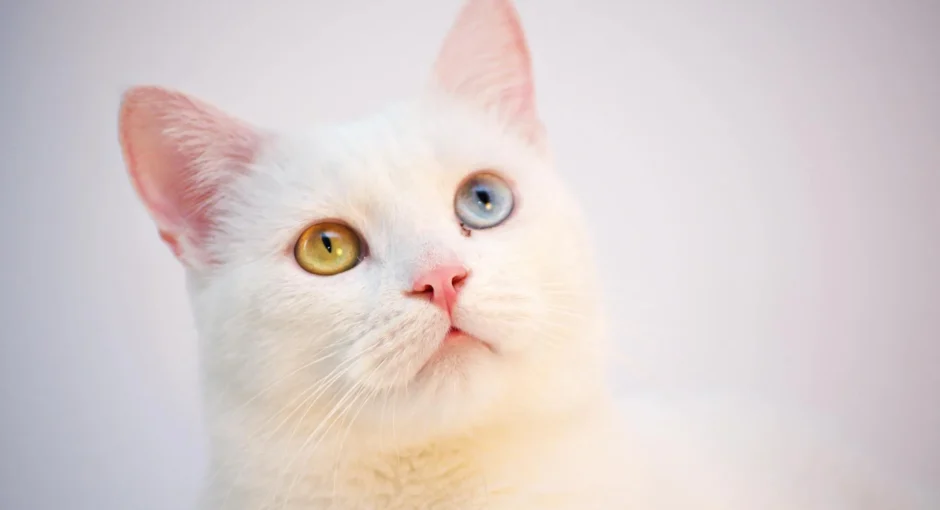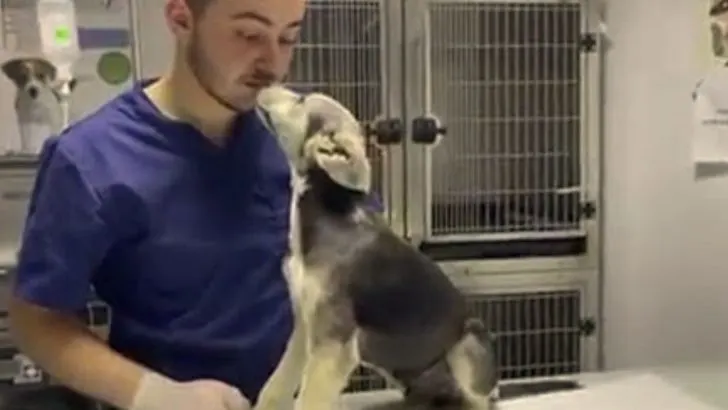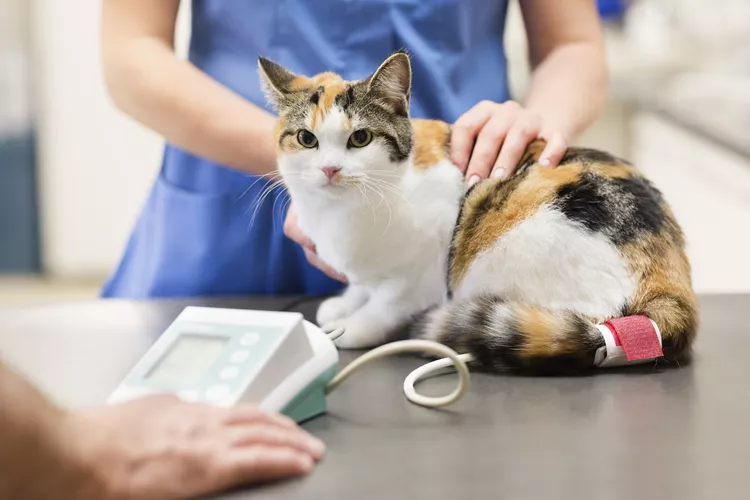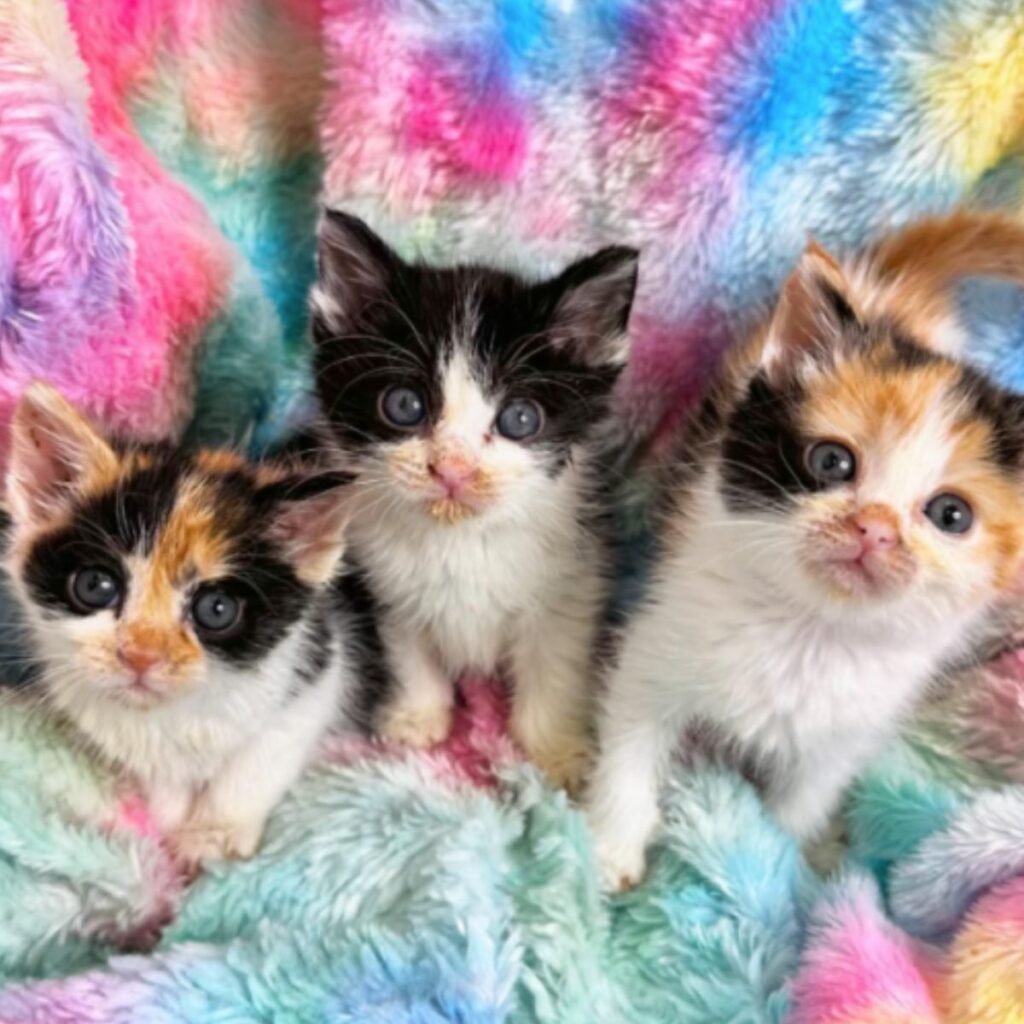Have you ever thought about how cats see the world? Cats’ vision works differently than ours. While they can see some colors, it’s not like what we see. This gives them a unique view of the world. It’s good to learn about how cats see to connect better with them.
Cats see mainly blue and yellow. They see red and green as shades of gray. This is because cats have two types of color cells in their eyes. This is unlike us humans, who have three. Because of this, cats don’t see the world in the same vibrant way we do.
When your cat is exploring, keep in mind they see the world differently. It’s not as bright and colorful for them. But, they make up for it with sharp night vision and the ability to notice even the tiniest movements. This skill helps them thrive in their environment.
Understanding how cats see helps us connect with them. It shows us they have amazing ways to experience the world. Even if it’s not through colorful eyes like ours, they still enjoy rich lives. This knowledge can deepen our relationship with these intriguing animals.
Read more: Top Orange Cat Names for Your Fiery Feline
How Cat Vision Works
Cats and humans share a lot when it comes to vision. Both have cones and rods in their eyes for seeing. A cat’s eye has rods that help them see in the dark and cones for various colors.
Yet, there’s a key difference in cone cells. Humans have three types, enhancing our color vision. But cats only have two types, which means they see colors a bit differently than us.
Compared to ours, cat vision isn’t as clear. Things further than six meters might look blurry to them. But cats make up for this with a wider range of sight, helping them keep track of more space.
One amazing fact is how well cats see in the dark. They’re built for it, with more rod cells in their eyes. This makes it easier for them to navigate low-light areas with clarity.
The Color Spectrum for Cats
Cats see the world in ways we can’t quite understand. They see blue, green, and yellow shades well. But, their world lacks the bright colors we enjoy, like red and orange. Their vision is like watching a somewhat muted, less vivid movie compared to ours.
This is because cats have fewer color receptors in their eyes than we do. Humans have three, but cats make do with just two. So, they see a smaller spectrum of colors.
But don’t feel too bad for our feline friends. Their eyesight might not match ours, but they excel in other areas. They can see well in the dark and catch movement with brilliant accuracy. That’s their special skill in the natural world.
Cats vs. Dogs: Color Vision Comparison
Cats and dogs share some color vision limits. They both lack the ability to see red. Yet, they still distinguish blues and yellows.
Dogs stand out with their broader vision scope over cats. This helps them see more of the world around them at a glance.
Both pets see better in the dark than we do, thanks to their many rod cells. These cells help them detect light in low-light settings better than humans can.
Even with their visual differences, cats and dogs are well-suited to their unique instincts and lifestyles because of their eyesight.
Read more: 10 Interesting Facts About Siamese Cats
The Perception of Color in Cats
Cats see the world in unique ways compared to humans. Their eyes detect blue-violet and yellow-green the best. This means they view things in shades of blue, green, and gray instead of seeing all colors like we do.
Cats make up for their limited color vision with strong senses of hearing and smell. They’re also great at seeing movement. These skills help them hunt well and move around even in dim light.
Humans can see a full rainbow of colors, but cats can’t. Cats see the world focusing on movement and differences in shadows. This way of seeing helps them out in nature, where they need to hunt and defend themselves.
Thinking about how cats see the world differently is quite interesting. It shows us their unique way of understanding their surroundings. It’s almost like they have their own special version of the world.
Comparing Cat Vision to Human Vision
Cats and humans see very different colors because of how our eyes work. While we see a wide range of colors, cats see fewer, more muted colors. Yet, they are very good at noticing movement.
It’s fascinating to learn how different creatures view their surroundings. By studying how cats see, we learn more about them and their world. It shows just how wonderfully varied life on Earth is.
| Aspect | Cat Vision | Human Vision |
|---|---|---|
| Color Perception | Muted shades of blue, green, and gray | Vibrant range of colors |
| Color Receptors | Two types of cones | Three types of cones |
| Low Light Vision | Superior night vision due to abundant rod cells | Less effective in low light conditions |
| Visual Acuity | Sharper focus on objects closer than six meters (20 feet) | Sharper focus on objects further away |
How Cats See in the Dark
Cats see very well in dim light, which makes them great night time adventurers. Although they can’t see in complete darkness, they make the most of the little light they do have.
Compared to us, cats have more rod cells in their eyes. Rod cells help see light, making cats see six times better in dusky settings than we do.
Cat eyes also have the tapetum lucidum. This layer at the eye’s back reflects light back into the eye. That’s why cat eyes sometimes seem to shine in the dark.
With extra rod cells and the reflective layer, cats use all the dim light they can find. This combo boosts their night vision, letting them see better in the dark.
This keen night vision is a big help for hunting. It also aids cats’ in living everywhere from forests to city alleys.
So, even though cats can’t see in pitch black, their amazing night sight lets them roam and explore at night. It shows how well they’ve adapted to twilight living.
Impact of Color Vision on Cat Behavior
Color vision affects cat behavior, but not as much as movement detection and low light vision. Cats see the world in blue, green, and yellow. These colors help them hunt well because they’re great at spotting movement.
Cats don’t need to see many colors to catch prey. They’re experts at noticing slight changes in movement. This makes them amazing hunters, even in the dark.
Even if they don’t see as many colors as we do, cats are very good at adapting. They use their sharp senses of hearing and smell. This helps them do well in their environment. Their hunting success comes more from their motion detection and night vision.
Read more: How To Avoid Losing Your Cat? Discover These 7 Things Right Away To Keep Your Cat Safe
Enhanced Hunting Skills
Cats are top hunters, especially at night, thanks to their great vision. They have more rod cells in their eyes, allowing them to see well in low light. This makes them excellent hunters at any time, day or night.
Their night vision and keen sense of motion make cats great at catching prey. They can survive and succeed in different places thanks to these skills.
Adapting to Color Perception
Cats depend on smell, hearing, and touch just as much as their vision. They use these senses to get around and connect with their world.
While cats don’t see colors like we do, it’s not a big problem for them. They’re focused on what helps them live – noticing movement and doing well in low light. So, their hunting and adapting skills are what really matter in their behavior and environment.
| Cat Behavior | Color Vision Impact |
|---|---|
| Efficient hunting skills | Depends more on motion detection |
| Visual exploration | Adaptability to limited color perception |
| Nocturnal behavior | Enhanced night vision for hunting |
Choosing Toys for Cats Based on Color Vision
When picking out toys for your cat, remember they see the world in a unique way. Cats can’t see all the colors we can. So, their choice in toys is a bit different.
Understanding Cat Color Preferences
Cats see blue and green the best. Toys in these colors catch their eye. But they aren’t as keen on red toys, for example. That’s because they see these colors differently.
Toys that move are also big hits. Think about toys that act like prey. Things like feather toys or toys they can bat around. These feed a cat’s hunting instincts, making playtime more fun.
Toy Features to Consider
When you’re shopping, look out for these toy features:
- Motion: Toys that move will keep your cat active. This could be a dangling string or a toy that moves by itself.
- Texture: Cats love different feels. Find toys with crinkly or soft parts for extra fun.
- Size: Pick toys that are just right for your cat. Too-small toys are a choking risk.
- Interactive: Toys that make your cat think, like puzzle toys with treats, are great for their mind.
Mix up your cat’s toys often. It keeps playing fresh and fights off boredom. Adding new toys taps into their curiosity and keeps them interested.
Read more: Understanding Cat Licks: Why Does My Cat Lick Me?
Avoiding Overstimulation
Play is crucial for your cat’s health. Yet, too much of it can tire them out. Keep an eye out for when they’ve had enough. Signs like not wanting to play anymore mean it’s time for a break.
Choose toys that match your cat’s unique needs and eyesight. This not only makes playtime fun but also supports their health and happiness.
Understanding Cat Visual Preferences
Cats see the world different than we do. Their eyes work best close-up. This makes it easier for them to see their prey.
Compared to us, cats see more to the sides. They can spot things moving from a wider angle. This is helpful for hunting or avoiding danger.
Did you know cats see well in the dark? Their eyes are designed for night vision. They have more rod cells, which see in low light.
Cats are great at noticing even slight movements. This skill helps them hunt. They are built to be stealthy and quick!
Therefore, knowing how cats see can help us make their world better. We can adjust the lighting and choose toys they enjoy. These steps make our furry friends happier.
The Fascinating World of Cat Vision
Cats see the world very differently because of their unique vision abilities. They see colors differently than us. But, their vision is great for their hunting and exploring skills.
Cat night vision is amazing. They have many rod cells in their eyes. This helps them see well in the dark. It’s a big plus for hunting at dusk, dawn, or night.
Cats are exceptional at spotting movement. Their eyes are super sensitive to motion. This helps them catch their prey by watching its every move keenly.
Cats don’t see bright colors like we do. However, they see well at night and catch movements easily. This makes them outstanding hunters and adventurers.
For those with cats, knowing about cat vision is important. It can guide you in choosing the right toys for your cat. Toys that tap into their hunting instincts and promote activity are best for them.
Read more: Funniest Dog Names: Chuckle with Your Pup!
Conclusion
Cats see colors differently than we do. They can’t see certain colors like red and orange. Instead, they see lots of blues, greens, and yellows. This makes their world look less colorful than ours.
Despite this, cats have other senses that help them a lot. For example, they see really well at night and notice movement more than we do. By knowing this, we can understand our cats better. It helps us know what the world looks like through their eyes.







